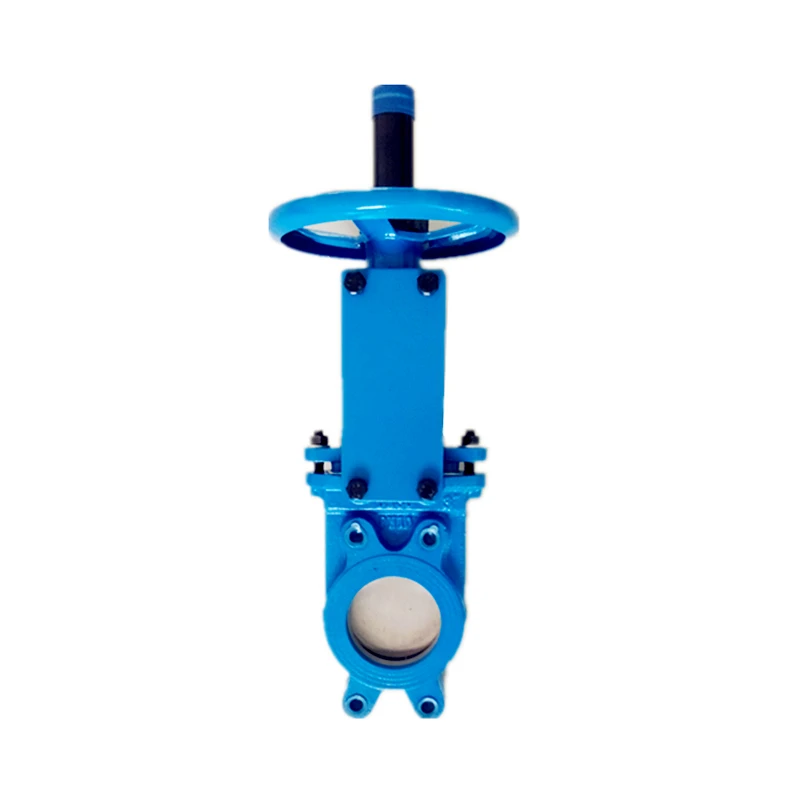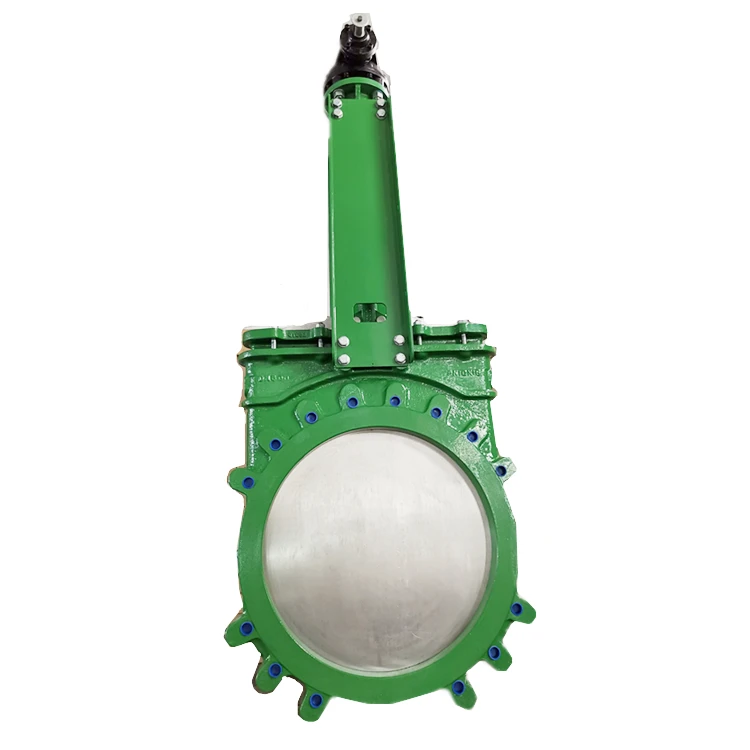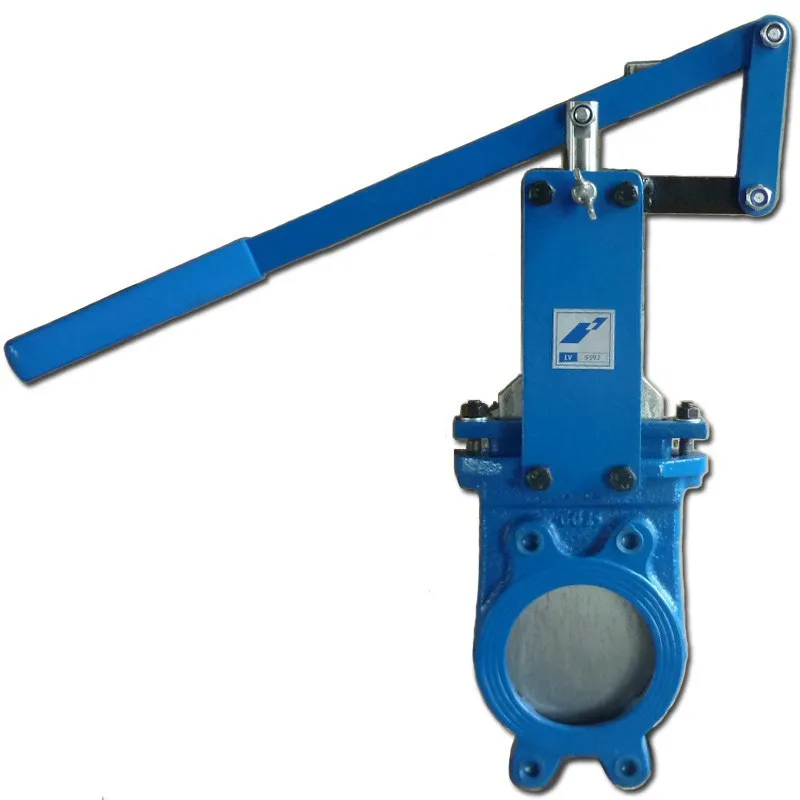Choosing the Right Knife Gate Valve: Actuator Options and Availability
Key Takeaways
Selecting the appropriate actuator for your knife gate valve is crucial for optimizing performance and efficiency. The choice between a knife gate valve with actuator and one equipped with a handwheel depends on specific operational requirements. Pneumatic actuators offer rapid response times and ease of automation, making them suitable for applications where quick and precise control is needed. Conversely, a handwheel allows for manual operation, providing simplicity and reliability in environments where automation may not be feasible.
In the landscape of knife gate valves in Australia, options abound. Various suppliers provide a diverse range of models suited to different industrial applications, including mining, water treatment, and wastewater management. When evaluating these valves, consider seal design, construction material, and pressure ratings to ensure compatibility with your system's requirements.
Focus on key features when assessing models with actuators. Attributes such as the actuator's torque capacity, size compatibility, and installation options significantly influence performance outcomes. Valves offering enhanced sealing technologies contribute to minimized leakage and prolonged operational life.
A comparative analysis among available knife gate valves for sale aids in identifying the best fit for specific needs. Review specifications diligently to discern differences in design quality and pricing structures among leading brands. Each model brings unique advantages; therefore, understanding these elements is imperative before making a purchasing decision.
Consider these factors seriously during your selection process to ensure optimal results from your knife gate valve application.
Choosing the Right Actuator for Your Knife Gate Valve: Handwheel vs. Pneumatic Options
Selecting the appropriate actuator for a knife gate valve is pivotal in ensuring optimal performance and efficiency within various applications. The handwheel actuator represents a traditional and manual approach to valve operation, providing direct mechanical control. This option is often preferred for simpler systems, where user intervention is desired, allowing for precise regulation of flow without the need for external power sources. Conversely, a pneumatic actuator offers significant advantages in terms of speed and power, employing compressed air to facilitate rapid operation of the valve. This feature makes it ideal for environments that require quick response times and automation integration, especially in industrial settings where efficiency is crucial.
When considering these options, one must also assess the operational environment and specific requirements of the system in which the valve will be used. For instance, if manual control is essential or if operations occur intermittently, a handwheel might be more suitable due to its straightforward functionality. In environments demanding high throughput or continuous operation, pneumatic actuators generally excel due to their rapid actuation capabilities.
Moreover, factors such as maintenance requirements, initial costs, and overall longevity should influence the decision. Handwheels necessitate minimal servicing due to their simplicity while pneumatic systems may require periodic checks on air supply and lines but offer reduced physical effort for operators in heavy-duty applications. By carefully evaluating these characteristics, one can determine which actuator type aligns best with their operational needs and objectives.

Knife Gate Valves in Australia: Availability and Top Choices
Knife gate valves have gained prominence in Australian industrial applications due to their exceptional ability to handle slurries and viscous fluids. The demand for knife gate valves is substantial, particularly in sectors such as mining, wastewater treatment, and pulp and paper mills. In Australia, purchasers have access to a diverse range of knife gate valves including models equipped with both actuators and handwheels.
Those seeking automation can opt for knife gate valves with a pneumatic actuator, which enhances operational efficiency by allowing remote operation. Alternatively, models fitted with a handwheel offer a reliable manual solution for situations where automation may not be feasible or desirable. Valves tend to vary significantly in terms of construction materials and design features, adapting to site conditions such as temperature fluctuations and corrosive environments.
Significant distributors across Australia are well-stocked with high-quality options from leading manufacturers. They ensure compliance with local standards while offering competitive pricing. Potential buyers can explore various options that meet both technical specifications and budgetary considerations. The right choice of knife gate valve hinges not only on actuator preference but also on the specific requirements of the application, assuring optimal performance in demanding settings.

Key Features of Knife Gate Valves with Actuators
Knife gate valves equipped with actuators offer numerous advantages that enhance their functionality across various applications. The integration of an actuator simplifies the operation, allowing for quick and precise control of fluid flow. These valves are designed with a sharpened gate to effectively cut through media, making them an ideal choice for handling slurries and viscous materials. One prominent feature is the ability to achieve a full shutdown of the flow when closed, reducing the risk of leaks and ensuring safety in operations.
The pneumatic actuator stands out for its speed and efficiency, providing rapid actuation which is essential in high-demand environments. Alternatively, models equipped with a handwheel offer simplicity in scenarios where manual control is preferred. This versatility caters to diverse applications from wastewater management to industrial processing. Additionally, knife gate valves are known for their compact design which minimizes space requirements while maximizing reliability.
When selecting a knife gate valve with an actuator, consider factors such as pressure rating, size compatibility, and the specific conditions under which the valve will operate. These parameters play a crucial role in optimizing performance and longevity.
"Assessing your operational needs carefully will lead to more informed purchasing decisions."
This ensures that you select the most suitable configuration tailored to your operational context.

Comparative Analysis of Knife Gate Valves for Sale: Finding the Best Fit
The selection of knife gate valves is crucial in various industrial applications, primarily due to their robust construction and ability to handle viscous materials. When considering knife gate valves for sale, one must assess several factors, including the choice between different actuation methods. The availability of knife gate valves equipped with actuators, such as pneumatic actuators, presents a convenient option for remote operation and precise control. Alternatively, the classic handwheel option offers simplicity and reliability for manual operations.
In Australia, a range of knife gate valves is available that caters to diverse industrial needs. These valves vary not just in their actuation method but also in dimensions, pressure ratings, and material types.
The following table summarizes key specifications for different types of knife gate valves:
Valve Type | Actuation Method | Typical Applications | Material Options |
|---|---|---|---|
Knife Gate Valve with Actuator | Pneumatic | Slurry handling | Stainless Steel, Cast Iron |
Knife Gate Valve with Handwheel | Manual | General flow isolation | PVC, Carbon Steel |
Knife Gate Valve (Various) | Pneumatic/Manual | Wastewater treatment | Various alloys |
Understanding these distinctions aids in narrowing down options that align with project requirements. Evaluating performance metrics paired with specific industry application needs ensures optimal performance of knife gate valves in service. This focus on operational efficiency underlines the importance of choosing the correct valve style and actuation method tailored to individual applications.

Conclusion
The selection process for a knife gate valve requires a careful examination of various options available in the market, especially when considering different actuator types. Knife gate valves with actuators offer enhanced functionality for applications requiring precision control, especially in automated environments. Models equipped with a handwheel provide the advantage of manual operation, giving operators greater tactile control in situations where power failure or pneumatic supply issues may arise. In contrast, those featuring a pneumatic actuator allow for quicker operation and integration into automated systems, making them suitable for high-throughput industries. In Australia, the availability of these valves remains robust, with numerous options for purchasing both in physical stores and online platforms. Buyers can compare specifications and pricing to align with their project needs effectively. As manufacturers continue to innovate, understanding the key features that distinguish each valve helps ensure optimal selection tailored to specific requirements. Focusing on functionality, reliability, and adaptability will guide users toward making informed decisions that meet their operational demands.

FAQs
What is a knife gate valve?
A knife gate valve is a type of valve used for on/off applications. It features a sharp-edged gate that slices through the medium, providing a tight seal when closed. These valves are ideal for handling slurries, powders, and other viscous materials.
What are the actuator options for knife gate valves?
Knife gate valves can be equipped with various actuator options, including handwheels for manual operation and pneumatic actuators that provide automated control. The choice depends on the specific application and operational requirements.
How do I choose between a hydraulic and pneumatic actuator?
Choosing between hydraulic and pneumatic actuators depends on factors such as available power sources, speed requirements, and control precision. Pneumatic actuators offer faster operation but may require compressed air supply. Hydraulic actuators provide greater force but need hydraulic fluid systems.
Where can I find knife gate valves for sale in Australia?
Several suppliers and manufacturers offer knife gate valves in Australia, making it essential to compare options online or through local distributors to ensure availability of specific models.
What should I consider when selecting a knife gate valve?
Consider factors such as the type of medium, temperature and pressure conditions, valve size, and the actuator type. Additionally, review specifications to ensure compatibility with existing systems.
Are knife gate valves suitable for high-pressure applications?
Knife gate valves are generally recommended for low to moderate pressure applications. High-pressure operations may require specialized designs or alternative valve types better suited for such conditions.
What maintenance is required for knife gate valves?
Regular maintenance involves inspecting seals and gaskets for wear, checking actuator performance, and ensuring proper alignment of the valve assembly. Lubrication of moving parts helps maintain operational efficiency.




